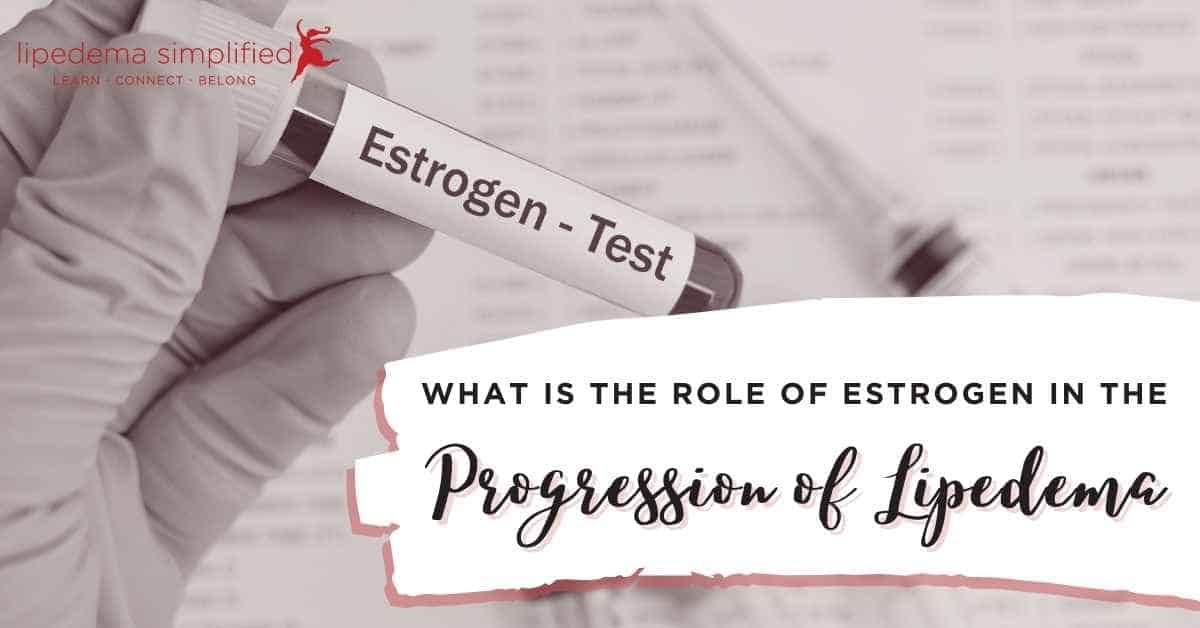
I’d like to talk about a paper out of Colorado State University in the US today. It’s entitled Lipedema and the Potential Role of Estrogen in Excessive Adipose Tissue Accumulation. This paper was published in the peer-reviewed journal International Journal of Molecular Sciences in October 2021. This review summarizes research examining how adipose tissue metabolism is affected by estrogen and if there is a possible link to the excessive fat accumulation associated with lipedema.
Estrogen and Lipedema
The authors suggest that estrogen may play a key role in the exacerbation and progression of lipedema. They believe that because the vast majority of those affected by lipedema are women, and that onset is usually at times of hormonal change, such as puberty, pregnancy, and menopause, this points to a hormonal influence, and it most strongly points to estrogen. They also suggest that the salient and overriding feature of excessive lower body fat distribution may then cause the other features to appear and worsen such as easy bruising and pain.
And the key factor in this excessive lower body fat accumulation that characterizes lipedema may be a dysregulation of estrogen receptors on cells. Cells have special receptor sites for estrogens to attach to. Estrogen is important for the growth and development of certain body tissues. If these receptor sites become dysregulated, one outcome could be excessive fat growth, especially to the lower body.
Estrogen signaling in fat tissue
The authors describe how estrogen signaling in fat tissue in the general population has been demonstrated to alter fat accumulation, uptake of fat into fat cells, growth in the size of fat cells, and the generation of new fat cells. This estrogen signaling also determines the sex differences in fat accumulation. For instance, at puberty, young women will develop increased subcutaneous fat throughout their body that young men don’t, and it will especially develop in the lower body. Because crucial times in a woman’s life when estrogen levels are changing (such as puberty and pregnancy) also coincide with the typical times of onset for lipedema, the authors believe that estrogen must be a critical factor.
Two possible mechanisms
The authors propose two possible mechanisms in this article. First, women with lipedema have been found to have a higher ratio of two types of estrogen receptors than women without lipedema. These receptors are known as estrogen receptor alpha (ERα) and estrogen receptor beta (ERß). This characteristic may result in a disruption to the normal patterns of gene expression and signaling that can result in not only reduced fat-burning but also increased fat production and storage, especially in the lower body. This dysregulation also reduces the functioning of fat cell mitochondria, which are the power source of cells.
Second, in lipedema fat, there may also be increased production of the enzymes that are used to produce sex hormones such as estrogen. This action, coupled with the higher ratio of ERα and ERß could account for the substantial fat tissue accumulation that occurs with lipedema.
They make a short mention of the interaction of estrogen with insulin and fat storage. Ketogenic eating reduces insulin levels and thus helps control fat storage, but so far keto hasn’t been shown to resolve estrogen issues. We, at Lipedema Simplified, have suggested that this may be one reason that a ketogenic diet is useful in managing and treating lipedema although it may not be able to cure lipedema.
Takeaways
This paper is important for women with lipedema as it offers possible mechanisms for the onset and progression of lipedema. As we gain a better understanding of the reasons why some women get lipedema while others don’t, we can more effectively formulate a treatment. For instance, this article may stimulate further research into the use of hormone therapy to treat lipedema as other authors have suggested. Certainly, this interaction between estrogen and other hormones such as insulin is an important area for further research and study.
For more updates on the latest research regarding lipedema, check out Lipedema Simplified’s Flash Briefings. It’s our daily mini-podcast where we share tips, tools, and research pertaining to Lipedema.
~ Leslyn Keith, OTD, CLT-LANA
Board President, Director of Research | The Lipedema Project
